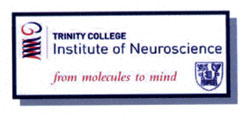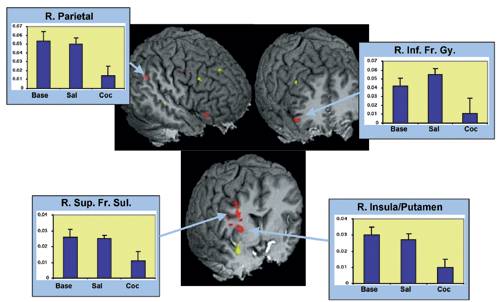| 2003 |

|
YEAR BOOK |
Trinity College Dublin
|
Trinity College Institute of Neuroscience
|

Trinity College Institute of Neuroscience, TCIN, is an interdisciplinary research and teaching institute with a unique niche of investigators whose mission is captured in the phrase 'from molecules to mind', emphasising the vision stretching across differing levels of investigation of brain function. The philosophy of the Institute is that an innovative approach to research in neurosciences crosses traditionally distinct academic boundaries, focusing on and anticipating the needs at the cutting edge of neuroscience, a quality that is necessary to be world-beating in the challenge of delivering molecule to mind to society.
The development of the National Neuroscience Network (NNN), incorporating UCD and UCC with TCIN at its core, is funded under the Programme for Research in Third Level Institutions of the Higher Education Authority and heralds the evolution of a new era in neuroscience in Ireland.
The building infrastructure for the institute at Trinity College, of which 3,500 sq. metres will be dedicated to neuroscience research, is making excellent progress and is expected to be completed by November 2004 as planned. The TCIN physical infrastructure will be the focal point for research that extends across subject, faculty and disciplines, with platform technologies, functional magnetic resonance imaging (fMRI) at TCIN and advanced microscopy and image analysis at UCC providing the framework and facilities to complement existing neuroscience expertise networks and ultimately compete with the best neuroscience centres worldwide.
Maria Fitzgibbon, a clinical biochemist with extensive experience in laboratory science, research development and hospital management was appointed Associate Director of TCIN in February 2003. She has completed a PhD focusing on systemic inflammatory responses and outcome following traumatic brain injury. Her appointment has further served to advance the links between the different disciplines involved in neuroscience and related research.
Research programme
Since October 2002, 20 postgraduate students, 9 Postdoctoral Fellows and two research technicians have started work in various multidisciplinary areas of neuroscience throughout the NNN and this number is continuously expanding. The impact is being realised across the following areas of research: ageing and the stressed brain; neurodegeneration and regeneration; neurogenetics; neuroplasticity; synaptic plasticity; neuropharmacology; neurophysiology; neurochemistry and neuropsychology. These research areas are drawn from the molecular, cognitive, behavioural and clinical neurosciences.
TCIN and functional Magnetic Resonance Imaging (fMRI)
fMRI is a relatively new procedure that uses MRI to measure small metabolic changes that take place in an active part of the brain. The first research dedicated state-of-the-art 3 Tesla human fMRI in Ireland is due to be put into practice at TCIN in 2004. The underlying science of functional brain imaging is intellectually intensive and the mechanics of performing the work extremely challenging, necessitating highly skilled technical and engineering expertise. The imaging centre at TCIN will also house high resolution animal MRI facilities.

fMRI Research
fMRI allows scientists to image the brain as it functions, and is the imaging method of choice for learning how a normal, diseased, or injured brain is working. Advances in resolution are enabling scientists to produce remarkably detailed computer-screen images of brain structures, and to observe neurochemical changes that occur in the brain as it processes information or responds to various stimuli.
One such area of fMRI research is that of cognitive function and drug abuse. While extensive evidence exists for the reinforcing properties of drugs of abuse such as cocaine, relatively less research has addressed the functional neuroanatomical correlates of the cognitive sequelae of these drugs. Dr Hugh Garavan and his research team at Trinity College are conducting a number of studies using fMRI to identify the neuroanatomical basis of cognitive processes involved in controlling our behaviour. The first investigation compared cocaine users and cocaine-na�ve controls on a GO/NOGO task in which successful performance required prepotent behaviours to be inhibited. Significant cingulate, pre-supplementary motor and insula hypoactivity was observed for both successful NOGOs and errors of commission in chronic cocaine users relative to controls. This attenuated response, in the presence of comparable activation levels in other task-related cortical areas, suggests cortical and psychological specificity in the locus of drug-abuse related cognitive dysfunction. A subsequent study in which motivation levels were manipulated produced increased activity in the insula and parietal lobes of the users but did not correct the anterior cingulate or pre-supplementary motor area hypoactivity. A second series of studies investigates attention switching abilities and has observed hypoactivity in the anterior cingulate and left striatum of users relative to controls. These results suggest that addiction may be accompanied by a disruption of brain structures critical for the higher-order, cognitive control of behaviour.
Contacts: Maria Fitzgibbon, TCIN; E-mail: [email protected] ;
John Fraher, Biosciences Institute, UCC; E-mail: [email protected] ;
John O'Connor, Conway/UCD; [email protected]